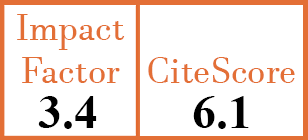Full Papers
Ultrasound imaging in juvenile idiopathic arthritis for the rheumatologist
P. Collado Ramos
CER6831
2014 Vol.32, N°1 ,Suppl.80
PI 0034, PF 0041
Full Papers
Free to view
(click on article PDF icon to read the article)
PMID: 24529294 [PubMed]
Received: 30/07/2013
Accepted : 18/11/2013
In Press: 17/02/2014
Published: 19/02/2014
Abstract
The present review provides an update of the currently available data and discusses research issues of US imaging in juvenile idiopathic arthritis (JIA). This review also includes a brief description of the normal sonoanatomy of healthy joints in children in order to avoid misinterpretation. Musculoskeletal ultrasound (US) is a quick, inexpensive, bedside method for evaluating children with no need for anaesthesiological support. Until now, the major objective in the application of US in children is to improve clinical diagnosis and patient care in daily practice. Articular disorders in children affect the epiphyseal cartilage leading to alterations in maturation and growth. US imaging allows distinguishing between synovitis and joint cartilage as well as between articular and peri-articular structures. Currently the principal applications for using US in patients with JIA include: detection of synovitis, tenosynovitis, enthesitis and cartilage and bone abnormalities. US is also used to guide needle injection. To date, the role of US in therapy monitoring has not been fully established. Future topics for study include: establishing international definitions (Bmode and Doppler) for joint components in healthy children and for US findings in JIA patients, consensus on scanning protocols and scoring systems, evaluation of the role of US with power Doppler in the assessment of the real state of disease (activity/remission) and developing a specific training programme for paediatric rheumatologists performing US in patients with JIA.


